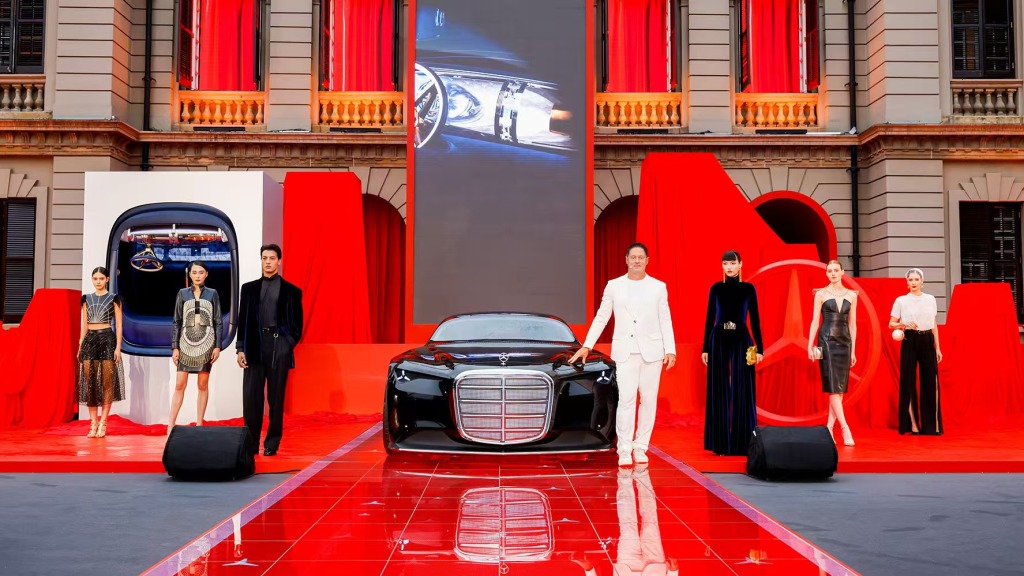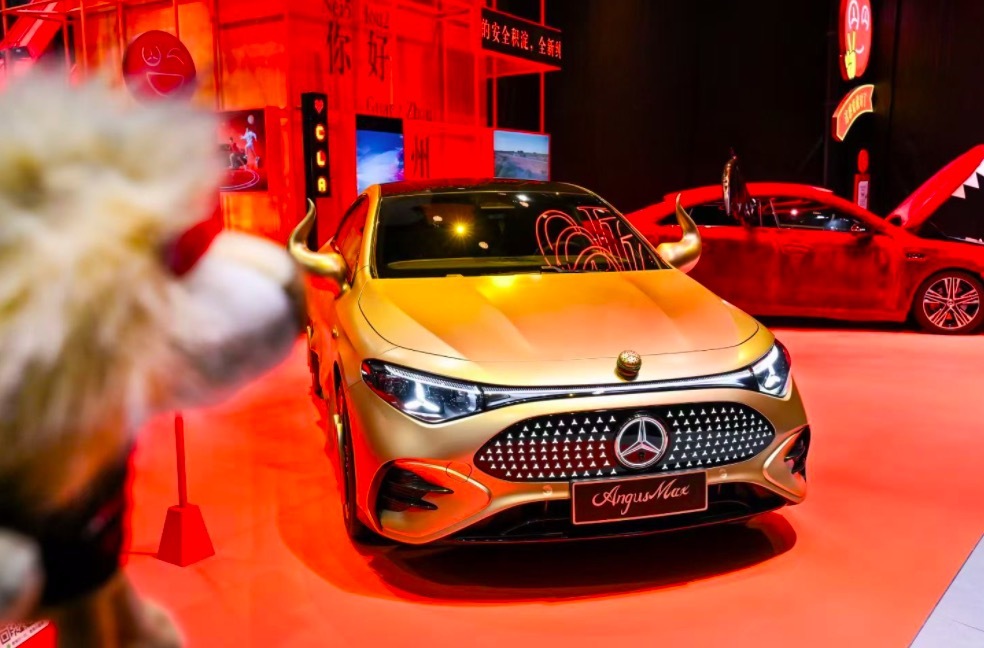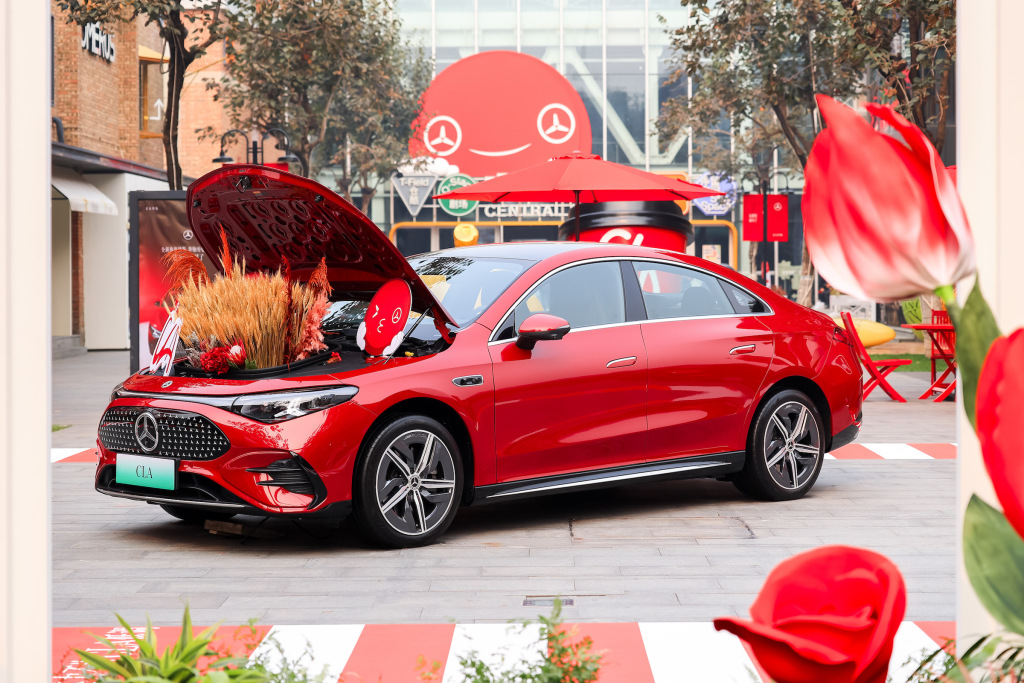
Since inventing the automobile, Mercedes-Benz has defined the aesthetic trends of each era with its elegant design, exquisite craftsmanship, innovative technology, and premium experience. Today, with the unveiling of the Vision Iconic concept car, Mercedes-Benz once again sets a new benchmark in automotive design.
On October 14, the Vision Iconic concept car made its global debut. Inspired by unconventional free thinking, it builds a bridge between the past and the future. Mercedes-Benz will usher in a new trend of classic avant-garde design.

It is reported that adhering to the aesthetic creed of "one glance at Mercedes, the style remains the same", the Vision Iconic concept car reinterprets one of the most recognizable elements in automotive history - the Mercedes-Benz iconic grille, on top of its luxurious aura that is not afraid of time.
The Vision Iconic concept car features a next-generation shield-shaped grille, inspired by the vertical grilles of legendary cars like the W 108, W 111, and Mercedes-Benz 600 Pullman. This forward-thinking and striking tribute to the classic chrome grille embodies a powerful presence, prestigious status, and unmistakable brand identity.
Dubbed the "Signature Grille," this new illuminated grille debuted on the all-new all-electric GLC SUV, brimming with emotion and intelligent technology, setting Mercedes-Benz apart from the crowd. The Vision Iconic concept takes this even further, illuminating the three-pointed star emblem perched atop the hood, further enhancing its exceptional presence.

The iconic shield-shaped grille defines the front face of the Vision Iconic concept car.
Gorden Wagener, Chief Design Officer of Mercedes-Benz Group AG, said at the premiere: "The Vision Iconic concept car is inspired by the 1930s, the 'Golden Age of Automotive Design.' It embodies the essence of Mercedes-Benz automotive engineering, with its striking hood, flowing body lines, and Art Deco influences, creating a true icon of automotive aesthetics. The integrated bench seat and rear section evoke legends like the 300 SL, creating an unforgettable aesthetic." He added: "The Vision Iconic concept car is more than just a car. It combines flowing sculptural beauty, timeless aesthetics, and a vision of future mobility. It blends classic craftsmanship, cutting-edge technological innovation, and an unmistakable design language. It is a masterpiece that embodies the pinnacle of value, dignity, and elegant charm."

As autonomous driving technology advances, the role of the car interior is also evolving. The Vision Iconic concept car embodies this future trend, offering a refreshingly new travel experience with its lounge-like ambiance, classic analog digital instrumentation, and a digital luxury experience.

The Vision Iconic concept's interior, inspired by the opulent Art Deco style, showcases exquisite craftsmanship and exclusive materials, reimagining automotive elegance. A sculptural "Zeppelin" suspended glass structure at the center of the instrument panel highlights the captivating art and detailing within the interior, while simultaneously maintaining the functionality of both the classic analog and digital instrument displays.
When the doors are opened, the instrument panel unfolds into a cinematic, fully analog animation inspired by high-end chronographs. A screen spanning the entire cabin integrates innovative technology into the interior. One of the four clocks in the center of the screen features the brand's logo and can be transformed into an AI companion.
Behind the suspended "Zeppelin" glass structure, a luxurious decorative panel features mother-of-pearl inlays, showcasing visual depth and exquisite craftsmanship. The door panels are also inlaid with intricate mother-of-pearl details, surrounding the exquisitely polished silver-gold brass door handles, extending into an elegant star-shaped pattern and framing the rear cabin. The front seats, upholstered in deep blue velvet, are spacious and soft, allowing the driver and passenger to share in this luxurious and relaxing moment.
Ahead of the driver, a four-spoke steering wheel exudes both sportiness and elegance. The three-pointed star logo, suspended within a glass globe and framed by spokes, resembles a dazzling jewel. The interior floor is adorned with exquisite straw marquetry, a technique originating in the 17th century and revived in the 1920s. Handcrafted in a classic scalloped Art Deco pattern, it recreates the beauty of historical art in a modern way.
As a stunning model, this concept car is setting a new standard in the era of electrification and digitalization with its breakthrough innovations and advanced technologies such as neuromorphic computing, steer-by-wire, solar coating and Level 4 highly automated driving.
“The Vision Iconic demonstrates our unwavering commitment to making the mobility of the future a reality,” said Markus Schäfer, Member of the Board of Management of Mercedes-Benz AG and Chief Technology Officer, Development and Purchasing.
Mercedes-Benz is developing innovative solar modules that can be seamlessly applied to the body of an electric vehicle like a thin paste. When the entire surface of the Vision Iconic concept car is coated with the solar coating, it can extend the vehicle's range using solar energy. Under ideal conditions, 11 square meters of solar coating (equivalent to the surface area of a mid-size SUV) can generate enough energy to add 12,000 kilometers of range per year. The coating is free of rare earth elements and silicon and is easily recyclable. With an efficiency of up to 20%, the solar cells can continue to generate electricity even when the vehicle is turned off.
Future models like the Vision Iconic concept car will include more and more functions, such as autonomous driving, which will also lead to a significant increase in energy consumption. Therefore, the energy efficiency of the vehicle is crucial. Mercedes-Benz is working with research and development and industrial partners to develop artificial neural networks, opening up new directions in the development of computer architecture. Neuromorphic computing can simulate the way the human brain works, making AI calculations more energy efficient and faster. For example, safety systems can better recognize traffic signs, lanes and other road users, and react faster even in poor visibility, and with an efficiency 10 times that of current systems. Thanks to neuromorphic computing, energy consumption for autonomous driving data processing is expected to be reduced by 90%.
With steer-by-wire technology, Mercedes-Benz combines a completely new steering experience with supreme safety. The advantages of this technology are even more pronounced in longer vehicles like the Vision Iconic concept car, particularly when combined with rear-wheel active steering, significantly improving handling, maneuverability, and parking convenience. This is because steer-by-wire reduces steering effort and eliminates the need for repeated gripping of the steering wheel during parking. This technology eliminates the need for a mechanical connection between the steering wheel and the front wheels; the driver's steering request is transmitted quickly and directly to the wheels via a control unit and actuators.

For Mercedes-Benz, design is the soul of the brand. Mercedes-Benz is not only a benchmark of aesthetics in automotive design, but also a global participant and pioneer in the fashion and design industries. The capsule collection, unveiled alongside the Vision Iconic concept car, includes six meticulously designed men's and women's looks, a nod to and tribute to Shanghai Fashion Week during its launch. The capsule collection, with subtle variations of deep blue and silver-gold accents, not only echoes the Vision Iconic concept car's luxurious color scheme but also reflects the graphic elements of the interior.

In addition, the book "ICONIC DESIGN" created by the Mercedes-Benz design team systematically summarizes the new era of Mercedes-Benz classic pioneers for the first time, and is an excellent window to understand Mercedes-Benz's "new era of classic pioneers".


